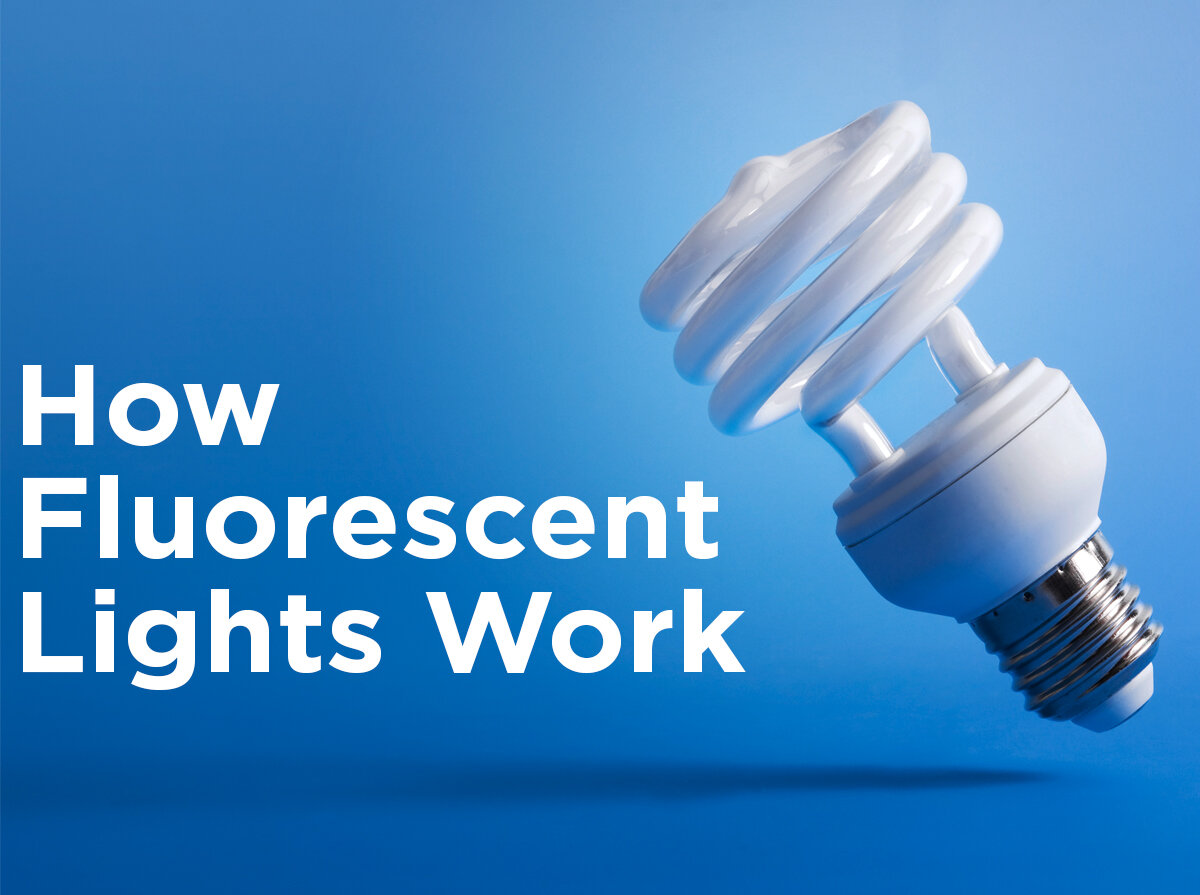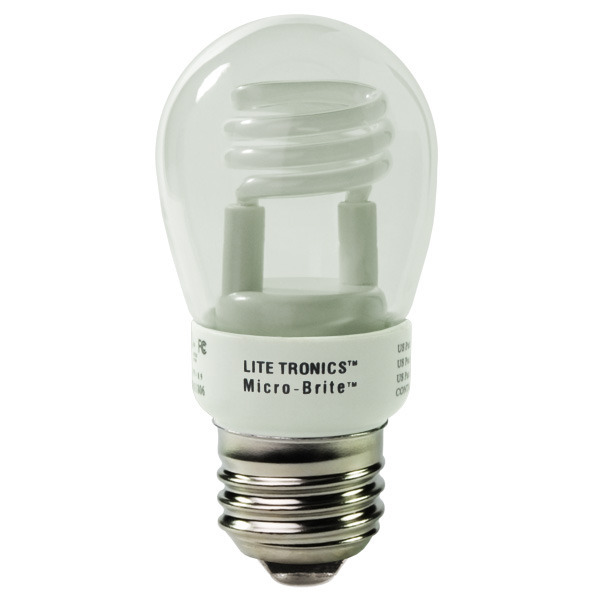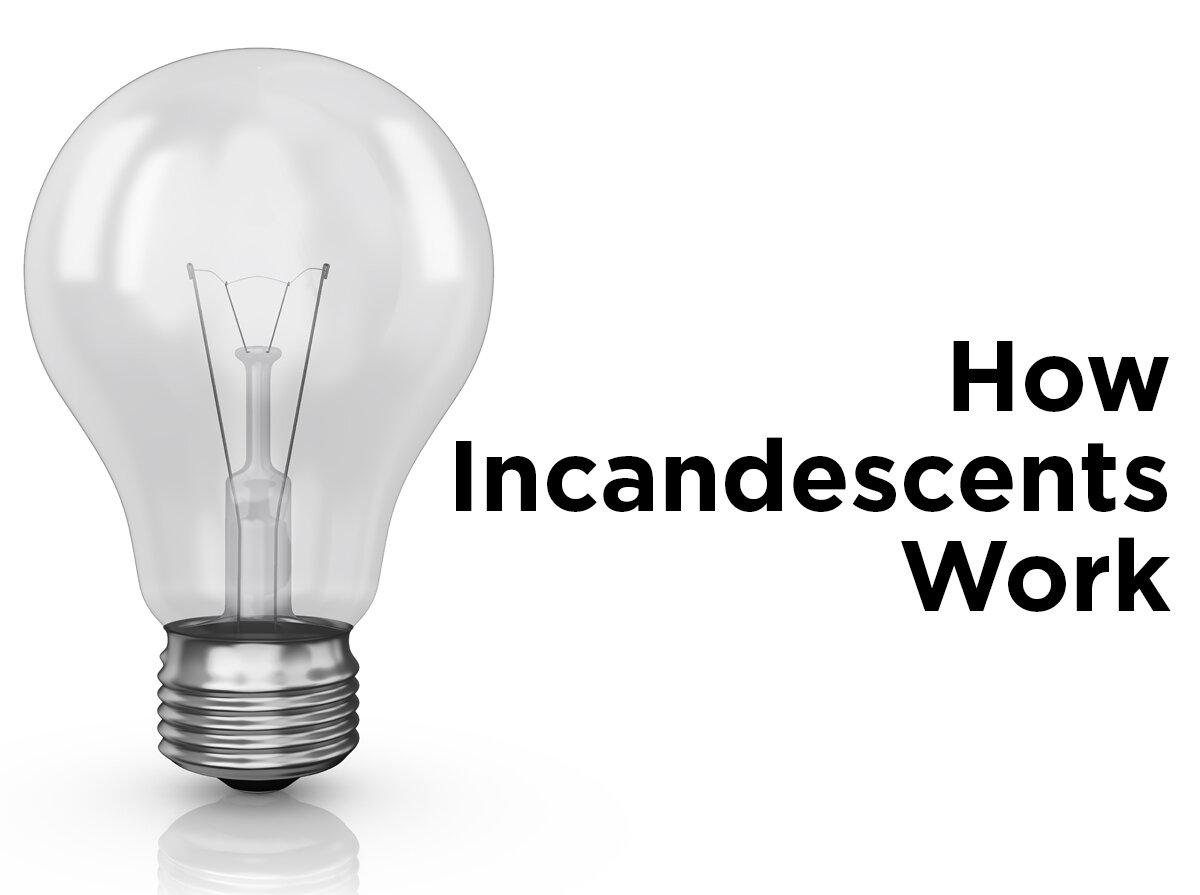How Fluorescent Lights Work
Now that we know how incandescent light bulbs work, we’re moving on to other light sources. The fluorescent tube is the workhorse of lighting, illuminating offices, hospitals, classrooms, and other public spaces we use every day. Fluorescent lights, including their compact fluorescent counterparts, are more efficient than incandescent bulbs because they produce more light, less heat, and use fewer Watts. Because of their efficiency, fluorescents and CFL bulbs have been rapidly adopted for residential and commercial lighting applications.
How a Fluorescent Tube Works
Fluorescent lamps consist of phosphor-coated glass tubes with tungsten cathodes on either end, filled with argon and a small amount of mercury vapor. When a large amount of electricity is applied to the tube, it creates an electric arc of power that energizes the mercury vapor causing it to release extra electrons at ultraviolet (UV) frequencies. The invisible UV light stimulates the tube’s inner phosphor coating, becoming visible light as it arcs across the tube and produces the familiar fluorescent glow. There are two common types of fluorescents: hot cathode and cold cathode fluorescents.
Hot Cathode Fluorescents
The key to hot cathode lamps is the ballast. In order to create the arc and subsequent glow of light, the ballast spikes the standard 120 volts to nearly twice that amount. The high voltage rapidly heats the tungsten filaments, forcing a current through the gases to jumpstart the arc. However, almost immediately the stepped up voltage is choked off to keep the lamp from short circuiting. Gas has a resistance that is dependent on the temperature. The colder the gas is, the more resistance it has, and a higher voltage is needed to get started. The high voltage is dangerous and difficult to create so the ballast manages the current, sparking and maintaining the light. Ballasts are either listed magnetic or electronic and there are several types of start methods that ballasts can use to start a fluorescent. The most well-known methods are preheat, rapid start, instant start, and programmed start.
Older lamps used the preheat method which had a separate starter switch warm up the cathodes before powering the lamp, allowing for lower voltages to be used. Modern lamps often use electronic instant start ballasts to quickly supply hundreds of Volts to the lamp for an instant lighting rather than a gradual warm up.
Cold Cathode Fluorescents
You may know them mostly as neon signs and the occasional spiral tube under an A-shaped cover. CCFLs, not to be confused with CFLs, use solid metal thimble-like cathodes which are more durable than the tungsten coils of hot cathodes lamps. The cathodes are not heated beforehand and a high voltage is applied to allow the lamps to turn on to full brightness instantaneously. Cold cathode lamps use a higher voltage than your typical linear fluorescents to ionize the mercury vapor.
The term “cold cathode” is actually a misnomer. Cold cathodes heat up to about 200 degrees Fahrenheit. However, that is several hundred degrees cooler than the 900-degree temperature surrounding the filaments of a hot cathode fluorescent lamp. The difference in temperature results in a couple of significant benefits. CCFLs have longer life spans, can be used in cold weather, and are better able to dim to lower light levels. Dimming is a complicated process for fluorescent lamps since many dimming methods work by lowering the power supplied. Yet a reduced power supply can keep the filament of hot cathode lamps from getting hot enough to begin the lighting reaction. Although they do produce a smaller light output, the low temperature requirement of cold cathodes also means they can withstand rapid on-off cycles.
How Does a CFL Work?
Compact fluorescent lights or CFL bulbs are hot cathode fluorescents and work the same way linear fluorescents do. Tungsten electrodes are heated, causing the argon-mercury gas to ionize and create a UV light which reacts with the phosphor coating on the interior of the glass to display the light we see. However, most CFLs are self-ballasted. There is a small electronic ballast located between the screw-in base and the spiral tube of bulb that manages the power supply the way an external ballast regulates power. In addition to integrated ballast, CFLs are considered compact because of their spiral tube. The familiar swirl is simply the standard linear glass rod twisted into a spiral that allows it to fit into fixtures where an incandescent would normally reside.
Lighting Tip: Dimmable CFL bulbs can be lowered to a certain level but since they are hot cathode fluorescents, they can’t dim as low as CCFLs. Regardless, you need dimmer switch rated to handle CFLs in order to dim your lights.
Tell us your favorite place to use fluorescents and/or CFLs in the comment area below. You can also call 1-800-624-4488 to speak with our expert 1000Bulbs staff about more energy-saving lighting solutions.










